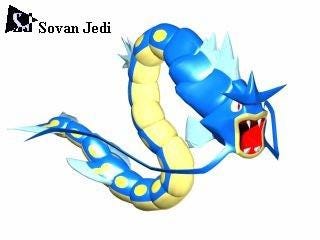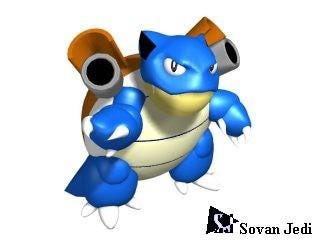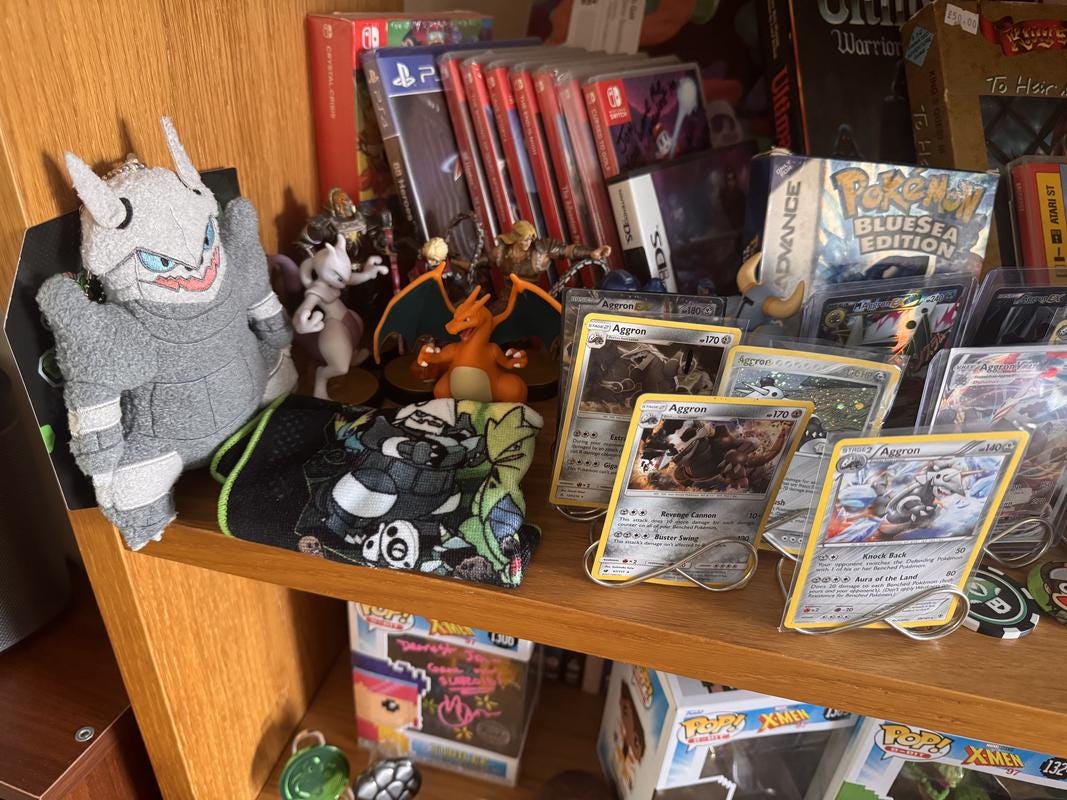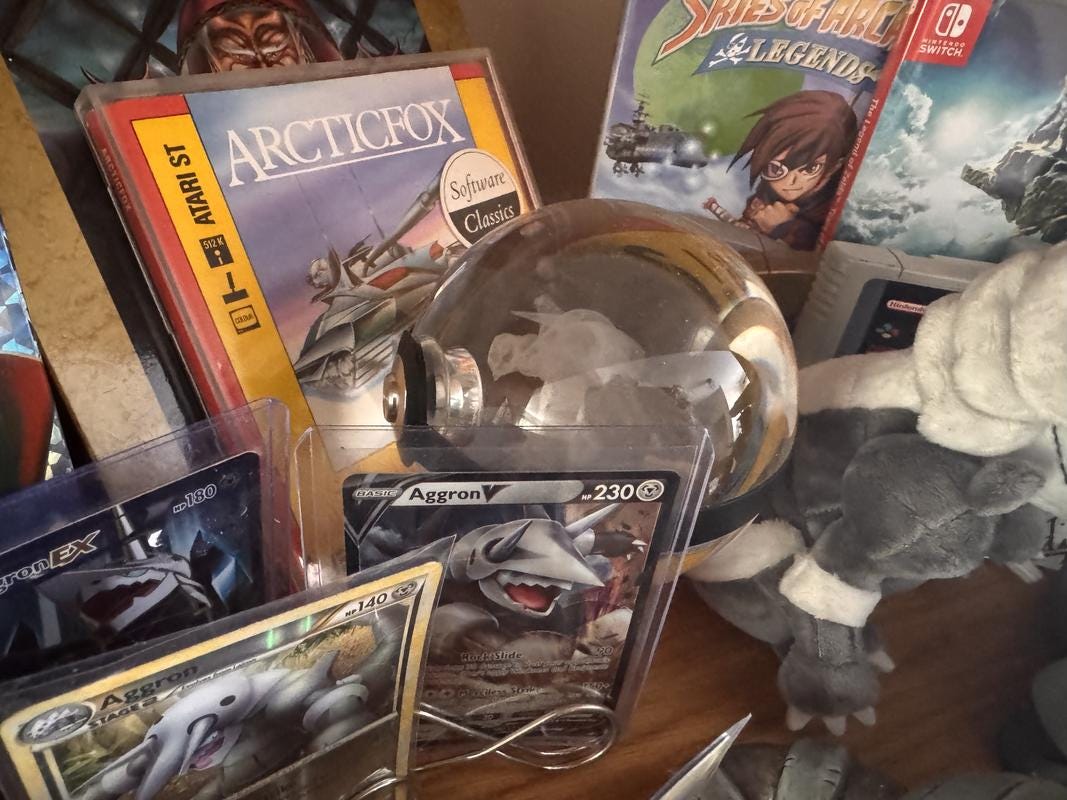Interview with Jon Davies (SovanJedi)
An interview with Jon Davies (SovanJedi) a professional pixel artist, who during his teenage years, created 3D Pokémon models which were shared online and in print during the late 90s and early 2000s
One of the great things about Pokémon fans is how they express themselves through creative endeavours such as art and fan fiction. During his teenage years, a Pokémon fan with the online username SovanJedi created a huge amount of Pokémon 3D models, which could be found on several large fansites and even made it into published magazines!
For this interview, we speak to Jon, the man behind the online persona, to learn more about his art and how it led to a career in the games industry!
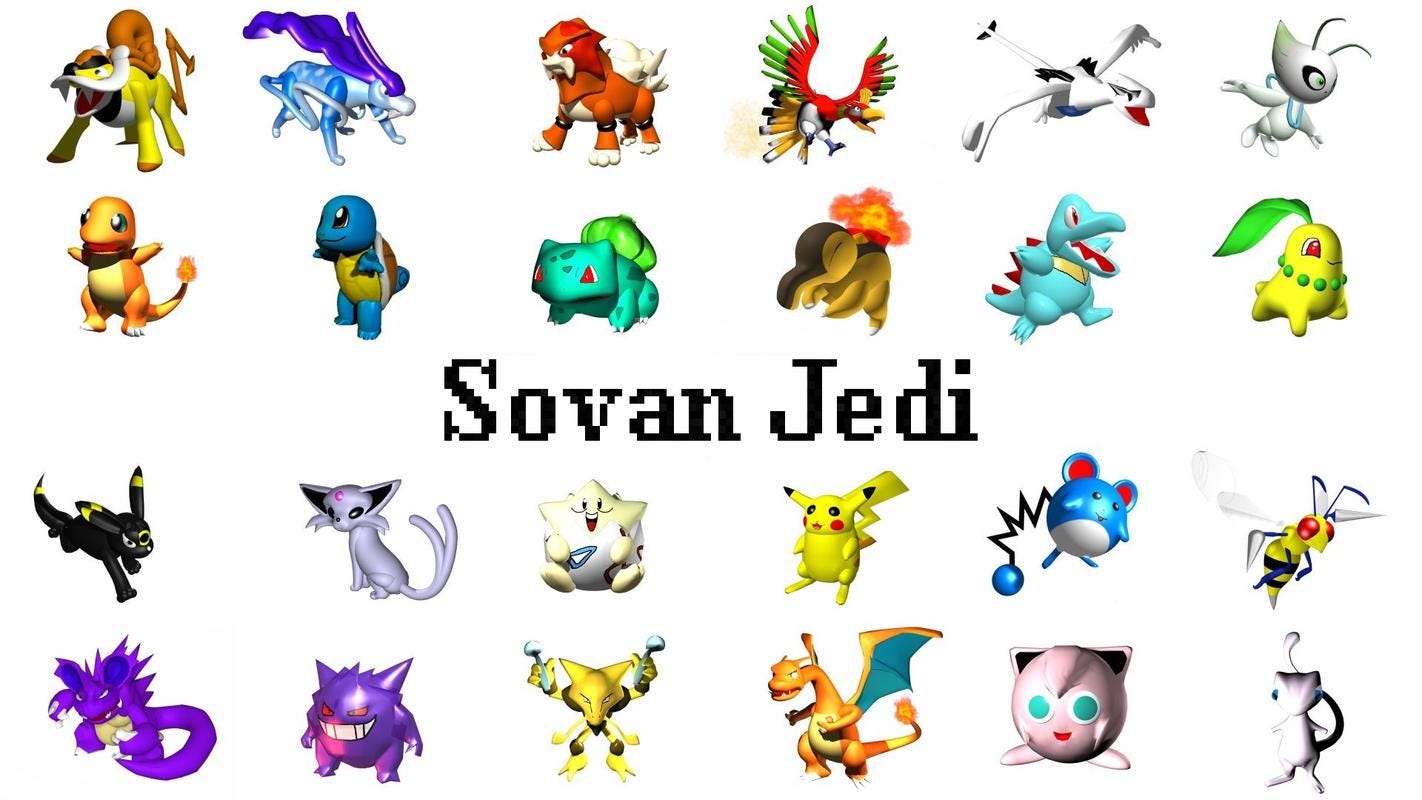
It’s great to speak with you, Jon! Can you please start by introducing yourself to our readers?
Jon:
Hi! Thank you for getting in touch; it’s my pleasure! So my name is Jon Davies, often going by the username “SovanJedi” in various online communities. I am a full-time artist from the UK, and I studied to be a 3D artist and animator throughout college and university. I was active around various online communities during my teenage years, namely Star Fox, Zelda, and -- of course – Pokémon. Despite my 3D background, however, I am now a professional freelance pixel artist and have been doing [that] for over 20 years.
In the late 90s and early 2000s, you created 3D models of Pokémon characters from the first two generations. What encouraged you to start creating them?
Jon:
Learning to do 3D modelling in my youth led me to creating a ton of art, much of it centered around fanart of my favourite games. At the time, Pokémon had just launched and was a huge worldwide phenomenon that captured the attention of everyone, so naturally I became engrossed in this. It was then that I discovered the fansite Pokemon3D.com, which hosted some 3D Pokémon images of its own (a combination of official art and fanmade), so I became involved with making art for that site. During this time, Pokémon Gold and Silver [had] just launched in Japan, and I became determined at the time to recreate all of the new Pokémon from that game in 3D.
This was an era where games launching worldwide simultaneously was very rare, and I believe there was a seven-month gap between the JP release and US release? [Editors note: There was an eleven-month gap between the Japanese and North American release of Pokémon Gold & Silver.] But [at] that time, non-Japanese players like myself were desperate to learn all we [could] about the secrets this insanely-hyped game held. I think a lot of people discovered some of the new Pokémon from my 3D renders – I know at least some people discovered Togetic from my render, for example.
Art software has changed a lot since 1999. How did you make your Pokémon models back then?
Jon:
I had “acquired” (cough cough) a copy of 3D Studio MAX, which was what I was being taught at college. This software was one of the big industry standards for 3D modelling at the time, with Maya and SoftImage being others. I think I ultimately moved on to Maya, but the overwhelming majority of the Pokémon images I’m known for were made with MAX. Before that I was using RayDream Studio, which now that I look back on it was extremely dire and made the move to MAX an absolutely heavenly experience. I am extremely grateful for taking the time to become acquainted with so many of these programs and 3D art packages as a whole, as it makes even the jump to modern software like Blender almost second nature (though, needless to say, the functionality is worlds apart!).
Your work was shown on several fansites, including Pokémon 3D, Pokémon Palace Network, and Pojo. How did you feel about the attention your work was receiving at the time?
Jon:
Oh, boy, let me tell you about the rollercoaster ride involved with this. Initially I was very happy with the comments and joy people expressed. Then as I got even remotely better at 3D modelling, I came to despise these things, and for many many years afterward I loathed that these images were forever part of internet history that I could [do] nothing to remove. (Let’s face it, some of these are absolutely terrible.) I would have the occasional person approach me saying they used to love these pictures and wanted to tell me how much they meant to them, and I just flat-out would not believe anyone because of how rancid I thought they were. In recent years and having a lot of reflection on them, I think being a relic of their time is the charm that people see in them. Having seen how the era of early 90s CG has become a point of fascination to a lot of people, even those who weren’t born at the time to live through it themselves, I can understand that appeal more. So my opinion has softened on them now.

On the topic of Pojo, your artwork appeared in their Unofficial Pokémon News & Price Guide Monthly magazine which was sold across the United States. What’s the story behind that?
Jon:
That was a crazy situation. As you mentioned in the last question, these 3D pictures appeared [on] multiple websites across the internet, though they kept the little watermark/logo I had stuck on most of the pieces... except for Pojo’s website, which had scrubbed my logo off of the images and placed their watermark on instead. I contacted the site and demanded they remove my pieces or replace them with the ones that properly credit me. The response to this was, I think, rather surprising to me at the time: not only did they comply, but the staff responsible for the printed version of the magazine reached out and asked if I would be interested in producing some original pieces for their magazine - as a paid gig! This would ultimately turn into the first ever paid commission I received as an artist of any sort, and I still have the issue of Pojo in question. The idea of turning my art into stereoscopic 3D double-page spreads was super fun too, and I’d love to revisit that again someday as a pixel artist.
Over twenty-five years have now passed since you made those models. For the past twenty years, you’ve worked in the games industry, on indie titles and with some impressive clients! Can you tell us a bit more about your journey?
Jon:
While I was studying 3D modelling in college, I had taken up pixel art as a hobby, something to help me with creating games using RPG Maker 2000 (one of which was a Pokémon game, but I never released it publicly, and it’s sadly lost to time now). I wanted to get into 3D modelling for game dev, but I was facing multiple rejections and time was running short. I was tipped off [about] a company called IOMO, who were making games for J2ME platforms (essentially phone games before iPhone and other smartphones came onto the scene, so more advanced than Snake but not really full 3D yet). [They had] put out a hire for a pixel artist. I applied, got the job, and worked there before being made redundant some four years later. At that time I formed an indie studio called Megadev with some friends and largely created Flash games. We were not a huge success but our work kept the lights on, and we did have a few success stories, like the Knightfall puzzle games, Super House of Dead Ninjas for Adult Swim, and Time4Cat (which would go on and become the inspiration for another team of developers that lead to the creation of Superhot).
After some time we split, and around that point was when I [was] considering becoming full-time independent as a freelance artist. I worked at Nicalis for [three and a half] years and worked on Binding of Isaac, Crystal Crisis (the only commercial game I ever did 3D art and animation work for) and the Switch port of Cave Story+. [After] leaving there, I jumped from job to job, working for a lot of clients and a lot of games. Some of them became big success stories, like Cursed to Golf, where others... well, not so much. But swings and roundabouts, and all that.
It’s interesting; when I took that pixel art job it was basically my “in” for the industry, with a plan to ditch it to take on my passion as a 3D artist on “real” games. But now I would never dream of doing such a thing, and I’m eternally grateful that my journey took the path it did in the end and I work on the sort of things I work on now.
Were there any models that you remember being particularly challenging to make?
Jon:
Certainly any of the more humanoid Pokémon were a struggle, and I do remember Gyarados and its scales took a long time to model properly. But probably the ones I had [the] most trouble with were a lot of the Gen 2 Pokémon that had no official artwork [at the time] for me to model them on, and I had to interpret their in-game sprites creatively (like Celebi’s wings, for some odd reason, I modelled to look like fleshy tube rings sticking out of its back - that was a weird one!). Then Nintendo would release the image and I would repeatedly slap my head and go, “Oh, so THAT’S what they were doing with that!” Although occasionally the in-game interpretation, upon reflection, makes zero sense whatsoever – I remember being annoyed at the Spinarak sprite in-game being a dark purple, which is what I coloured my model as, [and] then they released the official art and revealed it was light green instead! (Though as I write this out, I find out that they fixed this in Crystal version: it was only a problem in the original Gold and Silver [games].)
I also only had Pokémon Red at the time, so a lot of Blue-exclusive Pokémon were kind of a mystery to me. I distinctly remember Magmar being confusing: I had seen parts of it in a magazine once, but the way they laid the art out its head was covered, so I started modelling it with a sort of reptile mouth. Then I found out it has a duck beak and it was a huge shock!
Looking back at what you achieved, are there any models in particular that you are proud of?
Jon:
Some of the models I look at even today and think they kind of look alright, like Bulbasaur, Rhyhorn, Exeggutor and Blastoise. Actually, as a funny note, Blastoise got the ultimate seal of approval when I recently discovered that one of the 3D renders I made for it was stolen by a bootlegger and used for a bootleg copy of “Pokémon Blue Sea Edition” that has been circulating in the Philippines for a while now. I even have a physical copy with the box!
As we both know, Pokémon was immensely popular for kids like us during the late 90s. I am interested to hear your earliest memories of Pokémon and what the franchise meant to you growing up.
Jon:
I was a teenager when Pokémon first appeared on the scene, so maybe a little older than what is the normal age of induction into the franchise. But while reading about N64 games coming from Japan I remember the magazines would occasionally feature “Pocket Monsters”, the newest craze from Japan. As someone who grew up with the similarly named “Monster in My Pocket”, I was immediately interested. Then me and my friend were searching a game store near us that occasionally had import[ed] games in it, and they just so happened to have US copies of Pokémon Red and Pokémon Blue. We decided to simultaneously buy our copies on that day and we booted our journeys up at the same time. He picked Squirtle, I picked Charmander, and I was an idiot who didn’t understand how the game’s type chart worked so our first fight naturally had his Squirtle kick my Charmander’s butt. But it was at that time [that] we became utterly hooked and loved the world of Pokémon – its secrets, the size of the game and the versatility when creating your team full of Pokémon who all mean something to you. It was incredibly magical. For years after, we still held onto the pact of buying alternate versions of the new games and starting them on the same day.
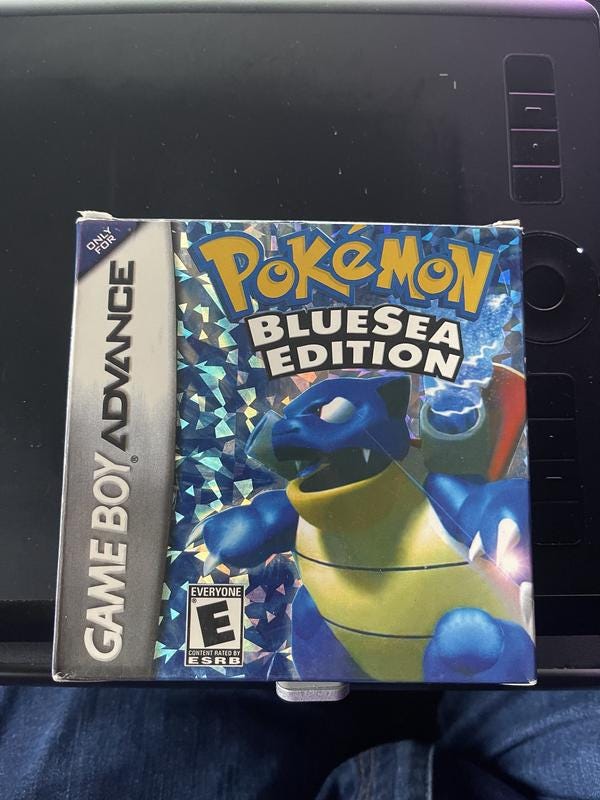
I am very curious to see what kinds of Pokémon items and merchandise you have that mean something to you! What can you share?
Jon:
I have not been at all shy to proclaim my love for Aggron, my all-time favourite Pokémon. However, it’s a Pokémon that falls into the category of Not Being Cool Enough For Merch, so I have made it my mission to collect as many Aggron-related toys, figures, cards and other items [related] to the steel-plated dinosaur. I maintain a whole shelf in my house that contains a decently-sized selection of Aggron items, including a polymer clay sculpt I made myself, and a cute charm a lovely friend of mine made (tsurudraws.com), which I very recently carried with me all the way to the Aggron Poké Lid in Kitakyushu, Fukuoka!
Outside of Aggron, I have this annoying habit of sometimes being drawn to Pokémon specifically because they have attained a level of unpopularity. A dear friend let me have a Dunsparce card which I carry in my wallet, and I have a Maractus plush specifically because it reminds me of my trip to Cancun, which was an amazing time and was swarming with Maractus in Pokémon GO.
Next year, Pokémon will reach its 30th anniversary. It has come a long way since we were first introduced to it! What do you think the future holds for Pokémon?
Jon:
Honestly? I would not even begin to say. Even if the magic of first playing Pokémon Red all those years ago has long gone, there is always a huge mystery to how the company works and what the new game will contain: you think the rules for what makes a Pokémon game a Pokémon game are set in stone, and then they bring out Pokémon Legends. You are absolutely SURE about all the rules that make a Pokémon a Pokémon, and then they introduce something new, like Ultra Beasts or Paradox Pokémon. Now, I could sit here and be cynical about how the future is going to hold many more ways to bless Charizard with a new form that keeps it relevant for all time, but my naive side just wants to be able to enjoy the ride and see where they take us. Whatever the future [holds], I’ll be very excited to experience it and learn everything I can about the new games.
Jon, thank you so much for taking the time to talk to us about your early days of creating Pokémon models. Do you have any comments you would like to make?
Jon:
I think it’s okay to indulge in the interests that breed creativity in you, whether that ultimately leads to an inventive innovation or just keeps you feeling joy, because being able to create is a major blessing that should never be forgotten or lost. Even if it leads to some embarrassment, you should know that someone out there loves and appreciates the things you take time to put out there in the world, and your little endeavours might lead others to make amazing things themselves. So please just go out there and make the things you want to make!
It was a pleasure to speak to Jon about his early Pokémon work, and we are super proud of how far he has come in the years that have followed. We wish him all the very best of luck in his career, and his future!
Interview conducted on: August 28th, 2025
Interview published on: October 9th, 2025




